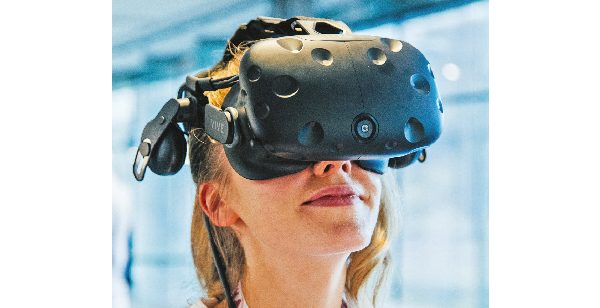By Paul Carton

From fake meat to fake emotions, if faking it gets the job done, who cares? This is the theme of the current exhibition running at the Trinity Science Gallery on Pearse Street.
An exhibition exploring the fakeness around us was something I thought I needed to update my brain with. When I walked in on the Monday evening I knew I’d have to have my brain in check. As I walked through the exhibition I noticed a dormant atmosphere and figured I was been watched by a group of students in a separate room in fits of laughter as I asked a gallery assistant for help only to be told they weren’t open on Mondays.
Doh! My second attempt the following day was no less unnerving but felt very much aware that immersing myself in this exhibit was the only way forward. Visitors have many attendants to explain pieces to you, as some of the concepts behind these installations are quite complex. This exhibition has your run of the mill virtual reality play toys, a synthHAizer that enabled you to modulate your fake laugh into something that sounded similar to your real laugh, for the purposes of explaining how in your thirties you are better at picking up on other people’s fake laughs and what societal reasons they do them for.
At another stand, there was a chemistry showcase on what forms of vanilla are out there and how the majority of vanilla we find in everyday products is made in the lab and that a tiny percentage is the real stuff from the bean which is said to be in your vanilla essence used in baking. You are allowed to help yourself to each of the vanilla types to see if you can tell of any differences.
The exhibit also shows the benefits imitations can have in science, showing a collection of fake frogs sent into the wild with microphones to pick up on the variety of sounds these creatures use to talk to each other and also fake hearts that are used as scaffolding for stem cells to be applied. The exhibit which runs until the end of this week has to be seen to be believed.
Photo courtesy of the Science Gallery.



